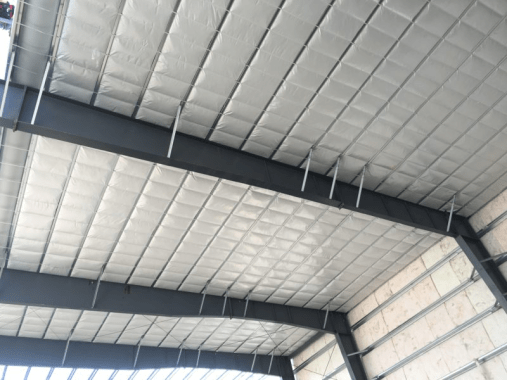K, R, U, and C are the different insulation ratings provided for building insulation materials. Understanding the insulation ratings helps to choose the appropriate insulation products for building facilities.
R-value is used prominently in building construction to specify how high or low the insulation is. It is dependent on K and C-values.
This article discusses the various insulation ratings and the general formula to determine them.
Contents:
K-Value of Insulation
K-value represents the thermal conductivity of a material in W/(m.K). As per ASTM c168, thermal conductivity is the time rate of steady-state heat flow through a unit area of a homogeneous material induced by a unit temperature gradient in a direction perpendicular to that area.
Thermal conductivity is the measure of the ability of a material to conduct heat. Generally, the K value is less than 1 for insulation materials.
K factors are reported in terms of one or many mean temperatures. The mean temperature is the average sum of the hottest and coldest surface temperatures to which the insulation material is exposed.
C-Value of Insulation
C-value represents thermal conductance. It is dependent on the thickness of the material. The thicker the insulation, the lower its C-value. As per ASTM c168, thermal conductance can be defined as the time rate of steady-state heat flow through a unit area of a material or construction induced by a unit temperature difference between the body surfaces.
C-Value = K-Value / Thickness of the material
R-Value of Insulation
R-value represents the thermal resistance of a material. The R-value of a material is used alone to judge the effectiveness of insulating material. It is the most popular indicator of a material’s insulator properties. As per ASTM C168, thermal resistance is the quantity determined by the temperature difference, at a steady-state, between two defined surfaces of a material or construction that induces a unit heat flow through a unit area.
R-value = 1/ C-value;
R-value = Thickness of the material/K-value
R-value is expressed in m²K/W.
The R-values of:
- Common brick, 4 inches thickness = 0.80
- Face brick, 4’’ = 0.44
- Concrete Masonry Unit (CMU), 8’’ = 1.11
- Concrete 60 pounds per cubic foot,1’’ = 0.52
U-Value of Insulation
U-value represents thermal transmittance. It is used to designate the thermal performance of a system. As per ASTM C168, thermal transmittance is the heat transmission in unit time through the unit area of material construction and the boundary air films induced by the unit temperature difference between the environments on each side.
The lower the U-value, lower is the rate of heat flow for a given set of conditions. A well-insulated building system possesses a lower U-value than an uninsulated or poorly insulated system. When referring to the U-value of a building, the R-value of different components of the building is considered for its calculation.
U-value is calculated from the sum of the thermal resistances of the layers that make up the element plus its inside and outside surface thermal resistances (Ri and Ro).
U-value = 1/(ΣR + Ri + Ro)
U-values are measured in watts per square metre per kelvin ((W/(m2K)).
The U-values of different building materials are expressed below:
- Solid brick wall: 2 W/(m²K)
- Cavity wall with no insulation: 1.5 W/(m²K).
- Insulated wall: 0.18 W/(m²K).
- Single glazing: 4.8 to 5.8 W/(m²K).
- Double glazing: 1.2 to 3.7 W/(m²K) depending on the type.
- Triple glazing below: 1 W/(m²K).
- Solid timber door: 3 W/(m²K).
Summary
The concept of K, C, R, and U-value can be summarized as follows:
- The better the insulation, lower its U-value.
- The greater the performance of a piece of insulation, the greater its R-value and the lower its C-value.
- For a specific thickness of insulation material and atmospheric conditions, the lower the value of K-factor, the greater its insulating value.
All the insulation ratings mentioned are specific to the materials being measured. To choose effective insulation material for a building, it is necessary to understand the in and out of all the insulation ratings.
FAQs
R-value represents the thermal resistance of a material. The R-value of a material is used alone to judge the effectiveness of insulating material.
R-value = 1/ C-value;
R-value = Thickness of the material/K-value
R-value is expressed in m²K/W
U-value represents thermal transmittance. It is used to designate the thermal performance of a system. The lower the U-value, lower the rate of heat flow for a given set of conditions. A well-insulated building system possesses a lower U-value than an uninsulated or poorly insulated system.
Read More
